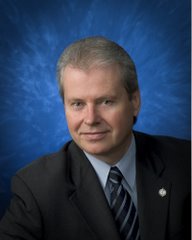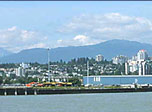Canada Budget November 2025
Based on the rhetoric, the
Carney government's first budget was a "transformative" new plan that
would overcome the "generational" challenges facing Canada. In reality, this budget is nothing new and
represents the same Liberal economic ideology that has been tried and failed
for the last decade.
The budget speech was
delivered with verbose claims. Experts
are now analyzing to understand that the delivered sandwich was not a
satisfying meal. The "nothing
burger," with lots of word salad and no meat, had some hot sauce pushing
the credit card over the limit, but little to relieve the hungry millions lined
up at food banks.
Sadly, every trip to the
grocery store costs more, because of hidden taxes that remain in the budget. The industrial carbon tax on farmers,
truckers, and supply chains, makes food production and distribution more
expensive. The needless plastics ban
increases packaging costs and generates more food waste. The inflation tax from runaway deficits
raises the cost of everything. Canadians
shouldn’t be forced to pick between eating or heating this winter.
Carney’s plan is similar to
that of his failed predecessor. The
document titled “Canada Strong” plans to spend more, borrow more, and
accumulate more debt than the Trudeau government envisioned. However, we recall that the Trudeau
government’s track record was one of reckless spending, harmful borrowing, and
excessive debt accumulation.
This budget contains a deficit
nearly twice the size forecast by the Liberals a year ago. The budget projects a $ 78.3 billion total
deficit — the amount of spending exceeding revenues. The economic statement tabled last year had
projected a hurtful deficit of $42.2 billion for this fiscal year, but the
spendaholics outdid themselves.
The Liberals tried to use
amplified rhetoric and a new accounting framework to obscure the bad
numbers. They falsely claim that Canada
has the lowest net debt-to-GDP ratio among the G7 and that its strong fiscal
position allows the government to run larger deficits. Carney the banker has a serious spending
problem, not a revenue problem.
There are two contrasting
pathways to economic growth. The first
is to create the best possible economic environment for entrepreneurs, business
owners, and investors by ensuring that the government only does what is
necessary, maintains predictable and competitive taxes, and adheres to
reasonable regulations. It doesn’t try
to pick winners and losers, but instead introduces policies to create a
favourable climate for all businesses to succeed. It gets out of the way wherever possible, and
facilitates instead of operates.
The alternative is for the
government to take an active controlling role in picking winners and losers
through taxes, spending incentives, and regulations. The idea is that a government can promote
certain companies and industries as part of a comprehensive industrial policy,
rather than allowing the market — comprising individual entrepreneurs,
businesses, and investors — to make economic decisions. The historical evidence is obvious. Option one has always delivered the best
results, and option two usually lags behind its potential, and sometimes brings
utter misery.
Under Liberal ideology, every
person has been given a pay cut or financial reduction, regardless of the
source of income. It is called
“inflation” and is the dream killer of a nation. Inflation always follows excessive repetitive
government deficit spending.
Voters need to truly
understand the dangerous magnitude of the cost of Canada’s indebtedness created
by annual deficits. Canadians must pay
interest on federal debt. The threat is
that growing federal debt will reach an expected $2.9 trillion in 2029/30. For perspective, federal debt stood at $1.0
trillion when the Trudeau Liberals took office in 2015. Interest costs on that debt will rise from
$53.4 billion last year to an expected $76.1 billion by 2029/30. Interest payments are dead money that could have
been spent on healthcare or public safety.
Over the last decade, Canada's
total debt burden has grown faster than that of any other G7 country,
increasing by 25 percentage points. Next
closest, France, grew by 17 percentage points.
A closer examination of Canada's total debt burden reveals a
significantly weaker position than the government claims, and one that will
deteriorate under the Carney ideology.
The government fiddles with the numbers by presenting "net
debt" supported by non-liquid assets—a misleading presentation. The cumulative evidence is that the Liberal
Cabinet is not financially competent to govern.
To clarify, actual interest
costs as a share of revenues must be counted - measure what comes in compared
to what must be paid out. When voters
made their big mistake in the 2015 election, interest costs consumed 7.5 per
cent of revenues. This means taxpayers
were losing 7.5 per cent of the resources they sent to Ottawa for spending on
actual programs, because this money had to go to service the debt accumulated
from previous overspending.
The horror is that under the
new budget plan, the gap between what the government collects and what is spent
will rise to 13.0 percent by 2029/30.
Slightly more than one in every eight dollars sent to Ottawa will be
used to pay interest on debt for past spending.
This is how countries can get into serious financial trouble by
continually losing revenues to interest payments, just to keep the doors open. Interest payments build nothing and relieve
nothing, especially when they are spent on operations instead of creating
projects of lasting value that yield an enduring return, such as hydroelectric
dams, pipelines, roads, bridges, waste treatment systems, and public transit.
Another instance of budget
misrepresentation is the Build Canada Homes and Build Communities Strong
Fund. It claims to increase the number
of new homes built annually and provide funding to provincial governments and
municipalities for infrastructure spending.
However, it is highly questionable whether these programs will actually
result in the construction of new homes.
As in the past, federal incentives will replace or crowd out existing
private sector spending. The
homebuilding push by Ottawa will likely result in fewer homes being built than
if the government just stayed out of the way of entrepreneurs and ended the
economic and bureaucratic barriers for builders.
The measures raise serious
concerns about the government's transparency and the actual impact of its
budget. After a decade of Liberal
mismanagement, the government's Canada Mortgage and Housing Corporation
forecasts a decrease in the overall number of housing starts every year for the
next three years. The more Liberals
entangle themselves in housing, the housing start numbers actually decrease. The plan is a clear indication of the
government's failure to regulate effectively, opting for the unsuccessful
'option two' where they wrongly try to operate instead of beneficially
regulate.
The CMHC predicts that housing
starts will decline, with 40,000 fewer units started in 2025 compared to
2024. It’s unclear whether
infrastructure spending — providing funds to provinces and municipalities —
results in an actual increase in total infrastructure projects. There are historical examples, including
reports by the auditor general, that describe how infrastructure initiatives
are often plagued by mismanagement.
Often, the Provinces reduce their own infrastructure spending to save
money, so the actual incremental increase in overall infrastructure is
negligible, and not much new is built.
In reality, the budget deepens
the deterioration of finances. The plan
will not deliver anything close to what the government boasts. It is merely "sound and fury” to cover
what Canadians should understand about the risks and challenges of these
initiatives. Along with the accumulated
debt, minimal real-world benefits will follow.
The numbers themselves have no politics or favourites. The bottom line of red ink is the predictable consequence of wrong beliefs and false claims. There is a remedy available, but the headstrong and the prejudiced will have to change their ways at the ballot box.
On Nov. 17th, 2025 Members of Parliament ended weeks of drama as the Carney government barely survived by a 170 to 168 vote approving the federal budget.
Macbeth, Act 5, Scene 5
There would have been a time
for such a word.
Tomorrow, and tomorrow, and
tomorrow,
Creeps in this petty pace from
day to day
To the last syllable of
recorded time,
And all our yesterdays have
lighted fools
The way to dusty death. Out, out, brief candle!
Life’s but a walking shadow, a
poor player
That struts and frets his hour
upon the stage
And then is heard no more: it
is a tale
Told by an idiot, full of
sound and fury,
Signifying nothing.



















